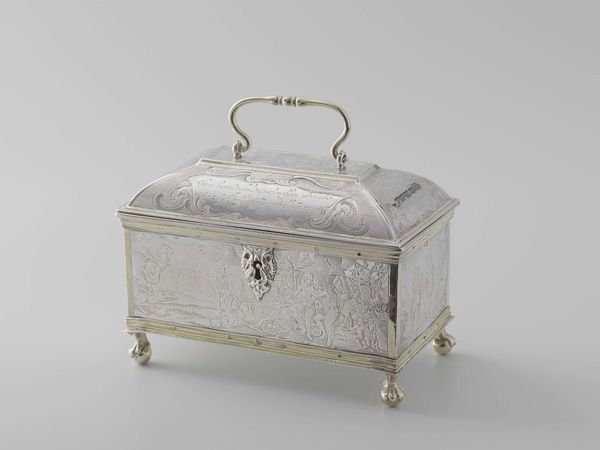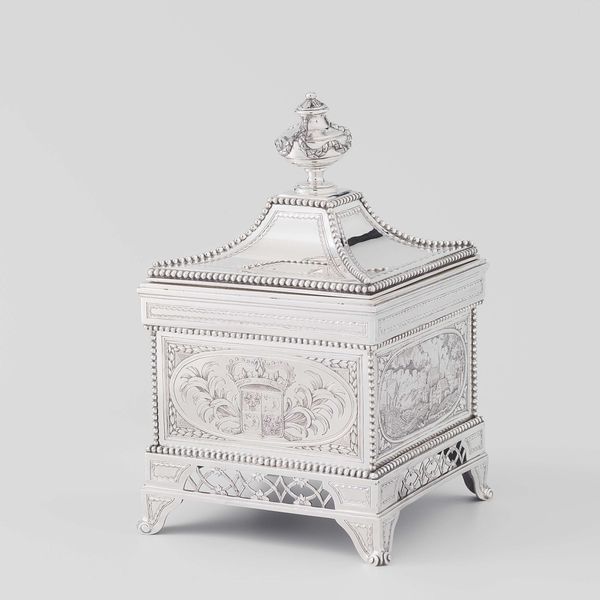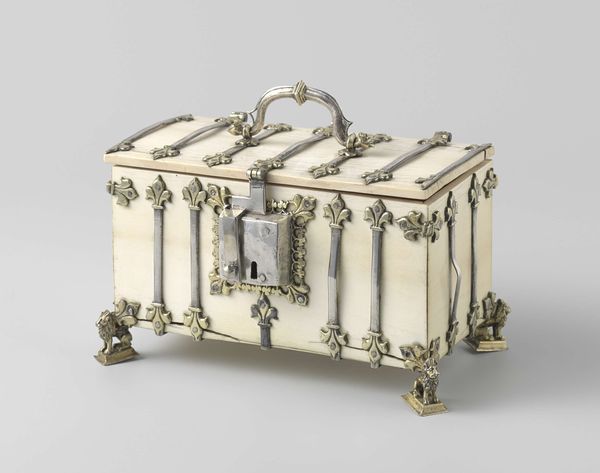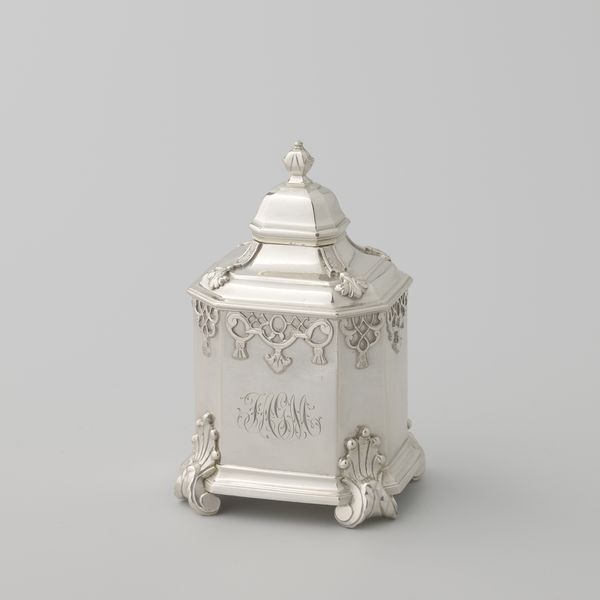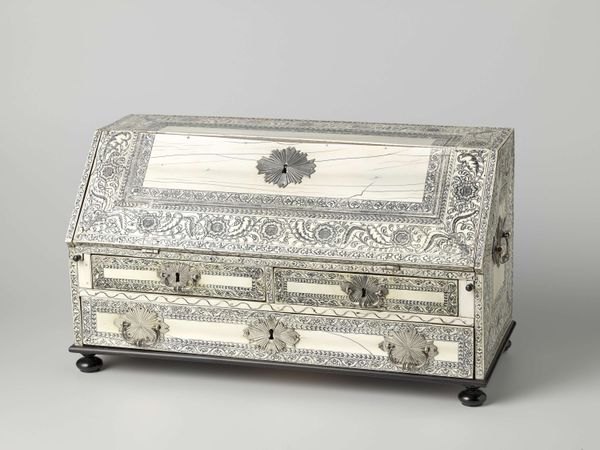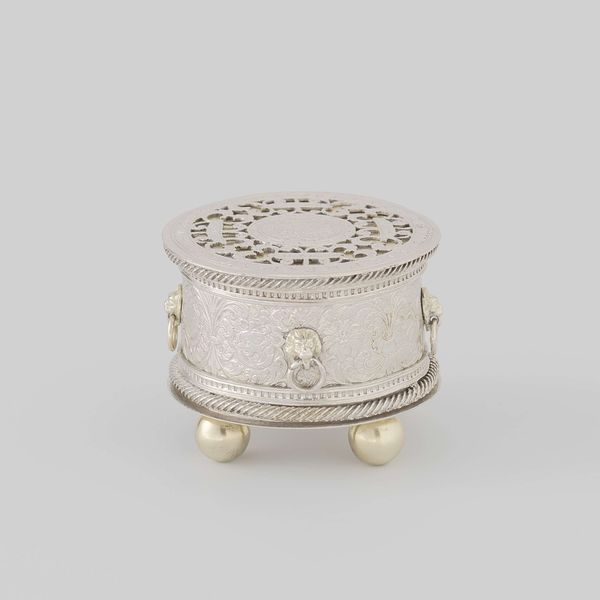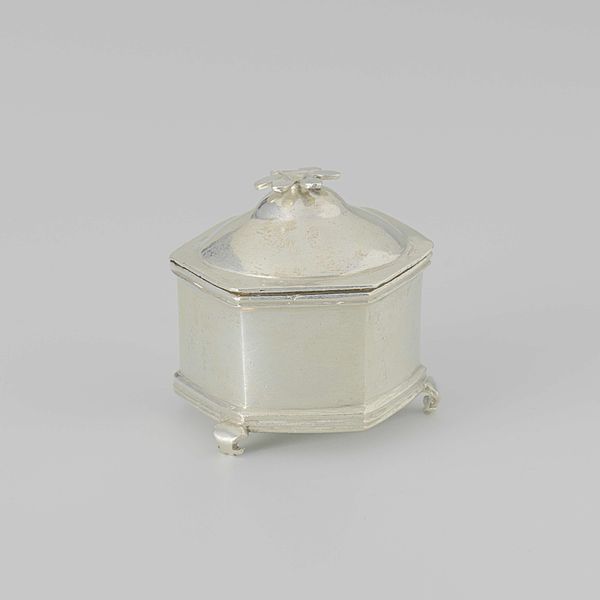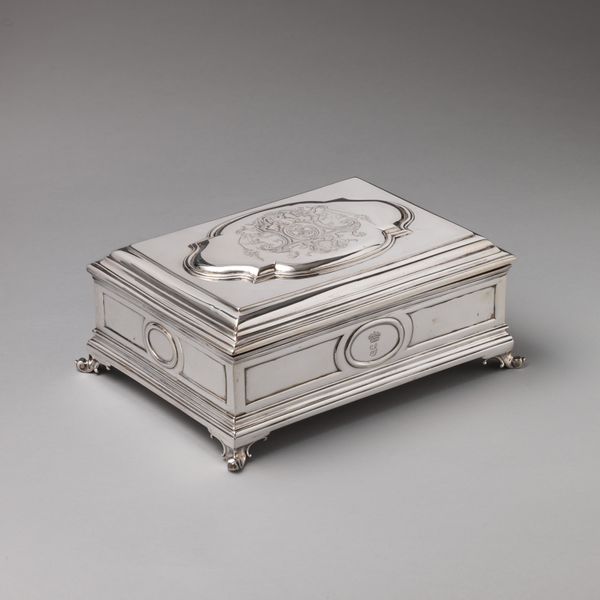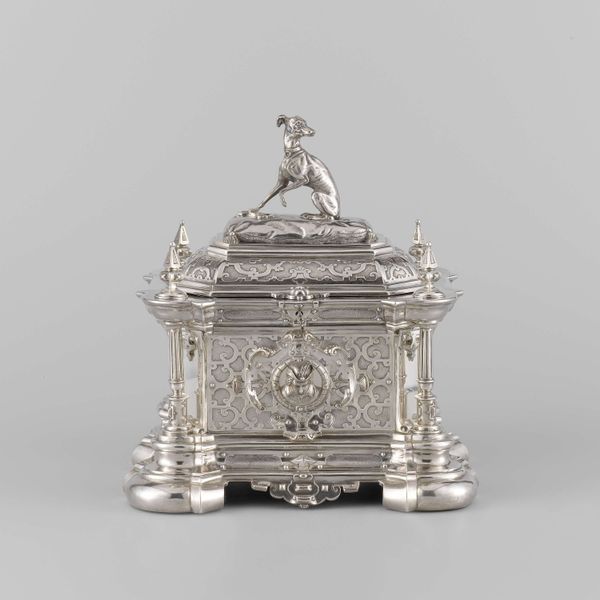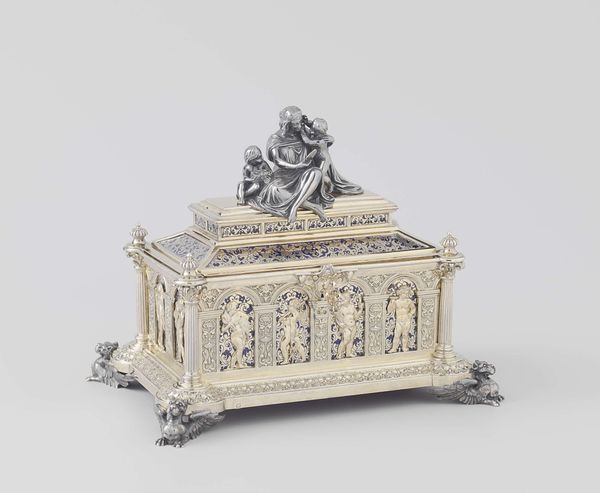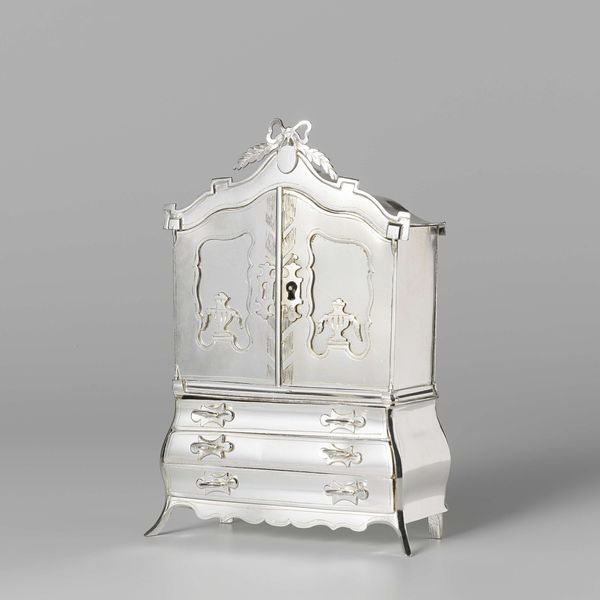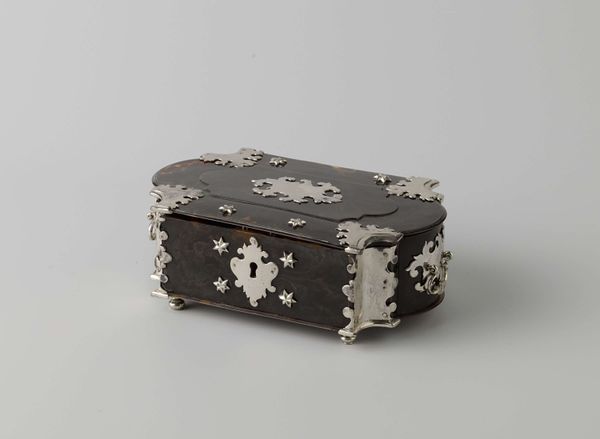
carving, silver, metal
#
carving
#
silver
#
baroque
#
dutch-golden-age
#
metal
#
genre-painting
#
miniature
Dimensions: height 7.5 cm, length 9 cm, width 5.5 cm
Copyright: Rijks Museum: Open Domain
Curator: Look at this intricately crafted silver chest! It's called "Knottekist," created in 1667 by Reyndert Bel during the Dutch Golden Age. Editor: Immediately, I’m struck by how small and ornate it is. There's a storybook quality, almost precious. How was something like this produced? Curator: Silver carving and metalwork were highly specialized trades then. The piece itself demonstrates exceptional skill, especially given the detailed genre scenes around the sides. We must consider that this wasn't merely decorative but an item produced in the social and economic contexts of a wealthy merchant class, it signified status, specialized labor and value. Editor: Absolutely. This speaks volumes about Dutch society in the 17th century. While the engravings present idyllic domestic scenes, it's critical to acknowledge they're made for a particular demographic that benefited directly from Dutch mercantile endeavors during a period of colonial expansion, and often obscured the plight and labor of enslaved persons from whom they benefited directly or indirectly. It is a reminder that even such objects tell complex tales. Curator: Precisely. Looking closer, the material is of importance – this gleaming silver finish is itself the result of a labour and a choice. Silver, and its craftsmanship are not intrinsic but represent a considered decision about aesthetics and functionality, it emphasizes the values attached to possessions at the time. Its diminutive form is itself not divorced from social significance as well. Editor: Considering its possible uses then, its scale and materiality reflect specific gendered uses and purposes in a bourgeois, heteronormative Dutch society where displays of wealth conferred the same form of status sought today. The lock reminds me about how even in ostensibly "private" life there were external structures for order and display. It invites consideration for how such miniatures like the "Knottekist" naturalize hierarchical social systems by representing scenes valorized and privileged above all else. Curator: True, although it's still wonderful to see such fine detailing, thinking through the labour to create these scenes so delicately is interesting in and of itself. The means of production alone showcase incredible expertise and dedicated time! Editor: Exactly, Reyndert Bel's craft and social contexts prompt layered dialogues about identity, power, and representation. That interplay is always more captivating than simply a pretty box. Curator: Indeed, a tangible echo of history's complexities! Editor: Agreed. An opulent artifact, for sure, yet brimming with untold social tensions simmering beneath its polished facade.
Comments
No comments
Be the first to comment and join the conversation on the ultimate creative platform.
